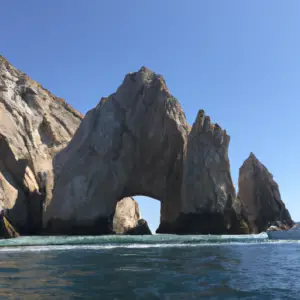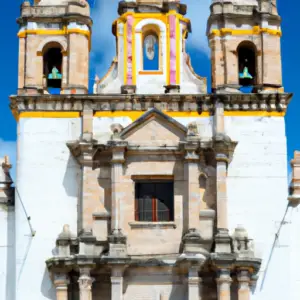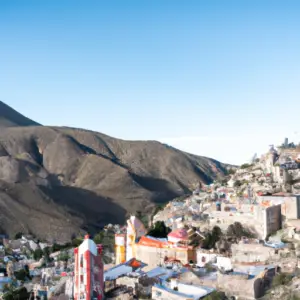10 Best Famous Monument in Baja California | Historical Building in Baja California

- By
- Aparna Patel
- |
- 12 May, 2023
- |
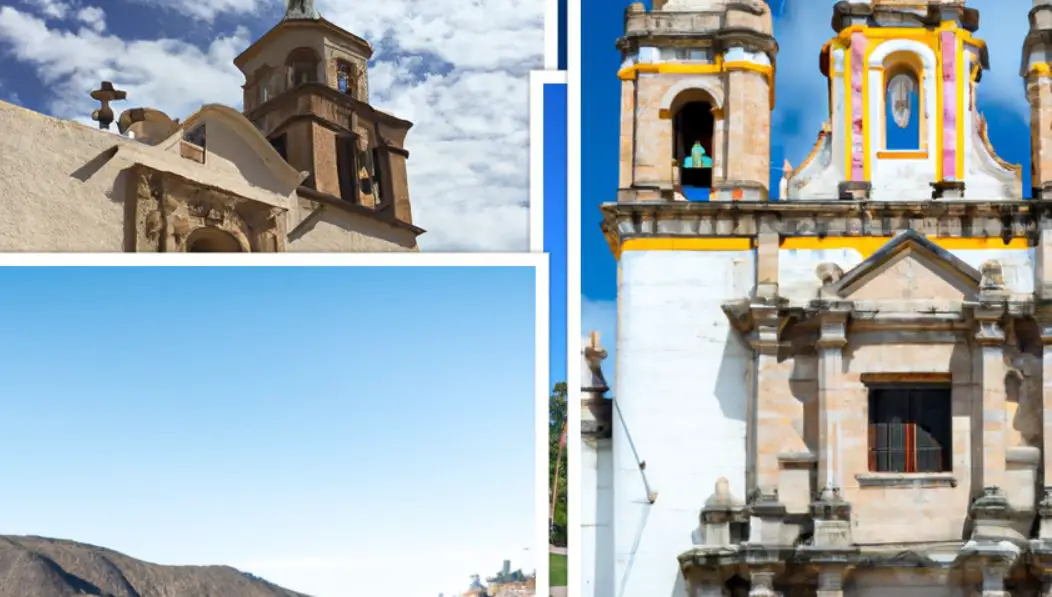
Baja California is a state that is full of unique and interesting history. From its ancient Native American tribes to its more recent Spanish colonization, this region has seen several events that have shaped the course of its past and present.
Today, Baja California is home to some of Mexico’s greatest and best-known historical monuments, with each building offering up a unique glimpse into the region’s fascinating history. In this post, we’ll explore some of the best and most famous monuments located in Baja California, from ancient ruins to modern landmarks.
10 Famous Monuments and Historical Buildings To Visit In Baja California
1. Cabo San Lucas Arch
Cabo San Lucas Arch is a natural limestone arch that is located in Baja California, Mexico. It is located near the tip of the Baja California Peninsula near Cabo San Lucas. It is one of the most popular tourist attractions in the area. The arch is about 50-meter-tall and 30-meter-wide and it seems to lead out to the ocean giving it a majestic appearance.
Its impressive size and beautiful surroundings make it a popular destination for sightseers, photographers, and cliff divers. It is a designated marine preserve, which provides a good place for fishing and underwater exploration. Visitors can access the arch by both land and sea.
2. Old Mission of Loreto
The Old Mission of Loreto is a historic landmark located in the city of Loreto in the state of Baja California, Mexico. The mission of Loreto is one of the oldest standing buildings in the Americas and is closely associated with the history and culture of Baja California.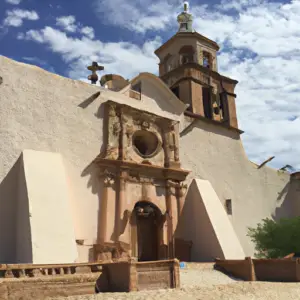
The mission was originally founded by the Jesuits in 1697 and served as the regional capital of the Baja California province for many years. The mission is best known for the nearby port, which played an important role in the exploration of the Pacific during the age of exploration. The mission is also notable for being the first major settlement in the region.
Today, the Old Mission of Loreto is a major tourist attraction and is marveled by visitors from its stunning architecture. The mission also houses a museum which examines the history of religion in the region and its impact on Baja California. Visitors can take a guided tour to learn more about the mission and its history.
3. Padre Kino Monument
The Padre Kino Monument is a bronze statue of Father Eusebio Francisco Kino, the 17th century priest known for his missionary work in Baja California.
The monument is located in the city of Ensenada in the Mexican state of Baja California. The monument was erected in 1978 on the 400th anniversary of Kino’s birth and was designed by local artist Hector Rocha. The 4.5 metre-tall sculpture stands atop a 4.5 metre-tall pedestal.
The monument serves as a tribute to Kino who, despite opposition from Spanish colonialists, spread the Christian faith and founded more than 20 missions in the then-uncharted lands of Baja California. The statue is particularly famous for its dramatic, Christ-like depiction of Kino, with his left arm raised and right arm holding a cross.
4. Guadalupe Citadel
The Guadalupe Citadel, also known as the Guadalupe Fort or La Fortaleza de Guadalupe, is an extensive set of fortifications built in the late 19th century as part of the defense against US invasion along the Baja California coast. It is located in the municipality of Ensenada, some 43 km (27 miles) north of the US border.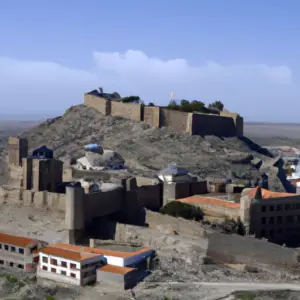
Christened “Our Most Beloved Lady of Guadalupe” in honour of its patron saint, the project was commenced at the end of May 1880, and finally completed in November 1887. Designed by Italian architect Salvatore Taranto, it is amongst the finest examples of military architecture in Mexico. Its position, rising up the peak of Cerro del Viejo (old hill), commands a privileged vantage point of not just the immediate area but also the view beyond, into the far horizons.
The Guadalupe Citadel features defensive walls measuring up to 1.2m in thickness, six cannons and three lookout towers, as well as a three-story building with two large courtyards. The walls and turrets make use of a mixture of stone, metal, and mortar. In addition, the interior contains an armoury and a chapel dedicated to the Virgen de Guadalupe.
Today, the Citadel is open for visitors and a popular tourist attraction in the region. Visitors are allowed to explore the grounds and visit the chapel. It is also a great spot for picnics, sunbathing and birdwatching.
5.Cathedral of Our Lady of Guadalupe
The Cathedral of Our Lady of Guadalupe is a beautiful and historic cathedral located in the city of Mexicali, Baja California, Mexico. It is one of the oldest churches in the region, having been founded in the early 20th century.
The cathedral features stunning neoclassical architecture, with a large central dome and two bell towers. Its interior is adorned with beautiful stained glass windows and intricate murals, and it can accommodate up to 1,500 worshipers.
The Cathedral of Our Lady of Guadalupe is an important cultural and religious landmark in Mexicali and a popular destination for visitors to the city. It hosts regular religious services and events throughout the year, including processions, masses, and concerts.
In addition to its religious significance, the cathedral is also a symbol of the city’s rich history and cultural heritage. It is a must-visit destination for anyone interested in exploring the region’s past and experiencing the beauty of its architecture and art.
6. Las Californias Monument
The Las Californias Monument, also known as Monumento a las Californias, is located on the banks of the Colorado River in Baja California, Mexico. It was built to commemorate the founding of the Californias by the Spanish explorer Juan Rodríguez Cabrillo in 1542.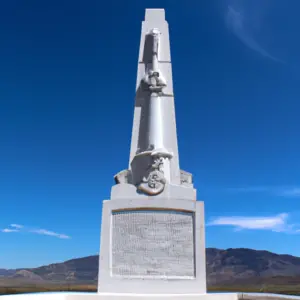
The monument consists of two columns that represent the two Californias, Baja California and Alta California, which were once one territory before being divided between Mexico and the United States. The columns are connected by a cable, symbolizing the unity between the two regions.
The monument is located near the border between Mexico and the United States and serves as a symbol of the historic and cultural ties between the two countries. It is also a popular tourist attraction and a great place to take in the beautiful views of the Colorado River.
Visitors to the monument can enjoy a panoramic view of the Cabrillo Channel, the nearby historic presidio, and the city of San José del Cabo. The monument also serves as a popular spot for taking photos and bird watching. There is also a nearby parking lot available for visitors.
7. Sebastian Vizcaino Monument
The Sebastian Vizcaino Monument is a historic monument located in Ensenada, Baja California, Mexico. The monument commemorates the Spanish explorer Sebastian Vizcaino, who was the first European to explore the coast of what is now known as Baja California in the early 17th century.
The monument consists of a statue of Vizcaino standing atop a tall pedestal, with smaller statues and reliefs at the base of the pedestal. The monument was designed by the Mexican sculptor Ernesto Tamariz and was inaugurated in 1935 as part of the city’s bicentennial celebrations.
The Sebastian Vizcaino Monument is an important landmark in Ensenada and a symbol of the city’s rich history and cultural heritage. It is a popular tourist attraction and a must-visit destination for anyone interested in exploring the region’s past.
8. Todos Santos Church
Todos Santos Church is located in the small town of Todos Santos in the state of Baja California, Mexico. It is an old Roman Catholic church built in 1834, with the exterior of the building done in a neo-Classical style.
The facade is done in a creamy white stucco, and inside the church is incredibly ornate, with an opulent altar, intricate carvings and interesting frescoes. The church holds a special place in the hearts of the people of Todos Santos, and is a popular tourist attraction for visitors wanting to explore the history and culture of this part of Mexico.
9. Real de Catorce Historic Town
Real de Catorce is a historic town located in the Mexican state of Baja California. It has a population of about 500 people, and is located about 70 km southwest of the city of Zacatecas.
The town is situated in a semi-arid valley in the Sierra de Catorce mountain range, which is part of the Mexican Plateau. This ghost town was once one of the wealthiest Mexican mining towns. It is often referred to as the “Pueblo Místico” due to its mystical atmosphere and abundance of legends.
Real de Catorce has a long history dating back to the 17th century. Its original inhabitants were indigenous groups, though they were later displaced to mining of silver and other minerals. The town eventually grew to an impressive size, largely due to the wealth of its inhabitants. However, the mining industry eventually declined, leading the town to become a ghost town in the 1960s.
Today, Real de Catorce remains largely a ghost town, and the majority of its inhabitants left long ago. However, a small number of people have kept the town alive, and there are now several shops, restaurants and hotels.
The area also attracts visitors looking to explore its picturesque streets and historic structure. The town also serves as an important religious center, and is home to various sacred sites. In particular, the traditional religious practices honor San Pascual Bailón, who is believed to be the protector of the town.
Real de Catorce is also known for its stunning desert landscape and its dramatic sunsets, and the town has been used as a shooting location for several films and television shows. The town has also gained recognition as a haven for spiritual retreats, attracting people from around the world looking to explore its mysterious atmosphere.
10.Casa de la Cultura
Casa de la Cultura, also known as the Cultural House, is a historic building in the town of Tecate, Baja California, Mexico. The building was originally constructed as a jail in the early 20th century but has since been converted into a cultural center and museum.
The Casa de la Cultura features beautiful neoclassical architecture, with a central courtyard and arched passageways. It is now home to a variety of cultural programs and events, including exhibitions, workshops, and performances.
The building also houses the Tecate Museum, which features exhibits on the history and culture of the town and the surrounding region. The museum’s collection includes artifacts and objects related to the indigenous Kumeyaay people, as well as displays on the area’s ranching, agriculture, and mining industries.
The Casa de la Cultura is an important cultural and historical landmark in Tecate and a must-visit destination for anyone interested in exploring the region’s past and present. It offers a unique glimpse into the town’s rich cultural heritage and provides a platform for the promotion and preservation of the arts and culture.
Search Posts
Latest posts
-
4 Mar, 2024
How to make dining alone less awkward?
Popular posts
-
5 Mar, 2024
Why prohibit engine braking?
-
5 Mar, 2024
How to avoid drinking vodka?
